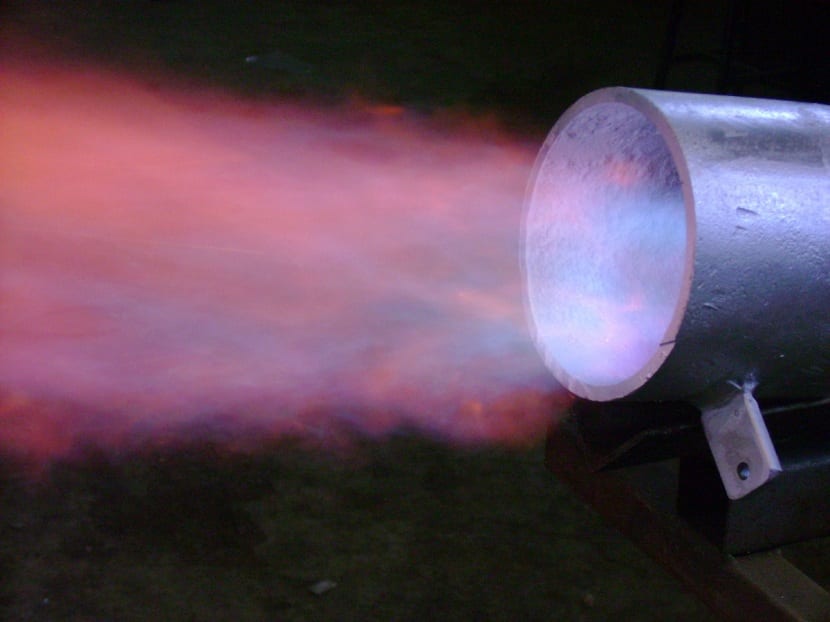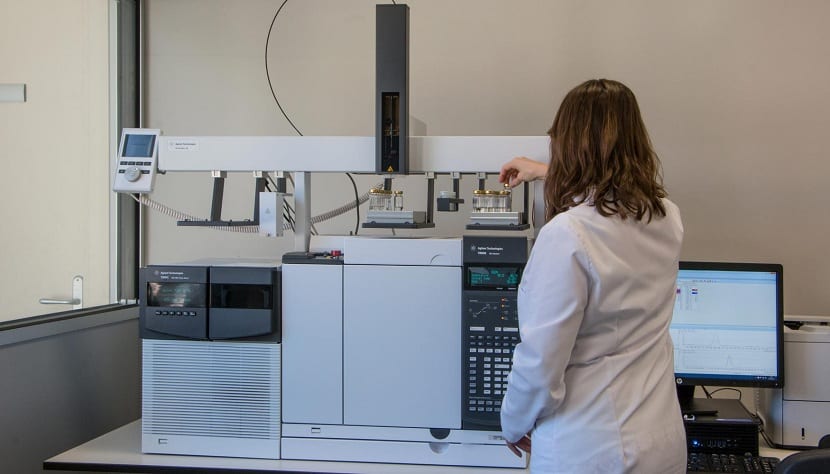
Today many homes and industries use natural gas. This gas is in continuous global growth and is expected to continue growing more in the coming decades. To use gas natural a very important parameter is used in the world of chemistry. It is about the calorific value. This is the parameter used to determine the quality of natural gas. Thanks to this, the cost of gas required for a certain action and, therefore, its economic cost can be reduced.
However, what is the calorific value? In this post you can learn everything about the calorific value, you just have to keep reading seguir
Definition of calorific value

The calorific value of a gas is the amount of energy per unit mass or volume that is released upon complete oxidation. This oxidation is not known for iron. It is very common when you hear some chemistry to think of oxidation as such. Oxidation is a concept that refers to the loss of electrons from a substance. When this occurs, its positive charge increases and it is said to oxidize. This mentioned oxidation takes place in a combustion process.
When we burn natural gas we get energy to create electricity, heat water, etc. Therefore, it is important to know the amount of energy that the gas is capable of generating per unit of mass or volume to determine its quality. According the higher its calorific value, the less quantity of gas we will use. In this lies the importance of the quality of a gas in relation to the economic costs.
Various units of measurement are used to measure calorific value. Kilojoules and kilocalories are used for both mass and volume. As in food, here in gases there are also kilocalories. It is nothing more than energy released during an oxidation process. When it comes to mass, it is calculated in kilojoule per kilo (kJ / Kg) or kilocalorie per kilo (kcal / kg). If we refer to volume, we will speak of kilojoule per cubic meter (kJ / m3) or kilocalorie per cubic meter (kcal / m3).
Higher or lower calorific value

When we speak theoretically, the calorific value of a gas is unique and constant. However, when it comes to putting it into practice, we can find two other definitions. One refers to the higher calorific value and another to the lower one. The first considers that the water vapor that is generated during the combustion process is completely condensed. This takes into account the heat that is generated by the gas in the phase change.
Assuming that all the elements involved in combustion are taken at zero degrees. For combustion to take place there must be air and that air also provides energy. Therefore, if both the reactants and the products that participate in the combustion are brought to zero degrees before and after, the water vapor will be completely condensed. This water vapor comes from the humidity inherent to the fuel and from the humidity that is formed when the hydrogen in the fuel oxidizes.
On the other hand, the lower calorific value does not take energy into account that is released by the phase change of the gas. It considers that the water vapor contained in the gases does not condense. By not changing phase, it does not release energy and there is no additional input. In this situation, there is only energy input from the oxidation of the fuel.
Industrial use

When it comes to reality in energy production industries, the lower calorific value is of the greatest interest. This is because the combustion gases are usually at a higher temperature than the condensation of water vapor. Therefore, the energy due to the phase change of the gas is not taken into account.
By representing the energy that the gas is capable of releasing during its oxidation, we can also know the quality of said gas. The more calorific value a gas has, the less quantity we will need. In the industry it is very important to take these factors into account. The higher the quality of the gas, the lower the production costs. The more stable the calorific value of a gas, cheaper will be the cost of operations.
The measures and control that are carried out on these operations depends entirely on what type of company does it. However, whatever the company (natural gas, reservoir, well or biogas) they exhaustively control this parameter. It is also widely used in industries such as metallurgy, glass factories, cement plants, refineries, power generators and petrochemicals.
Analytical measurements

We have commented that calorific value is a very important parameter and that industries have methods to measure and control it. There are various methods to determine the calorific value of a gas. The oldest and best known is that of the bomb calorimeter.
This method consists of introducing a gas into a hermetically sealed container of constant volume. The container must be isolated from other materials or from possible alterations in the measurement. Once the gas is introduced, a spark is used to ignite the gas. A thermometer is placed to measure the temperature. With this change in the temperature value we are going to measure the heat released by the oxidation reaction.
Although this method is very exact, it ends up consuming all the gas in combustion. Furthermore, it is considered a discontinuous measurement method. Therefore, this method is not used in large-scale gas consuming industries.
Continuous measurement of this gas is done by online gas chromatography. This consists of separating the components of the gas sample within a chromatographic column. Normally it is a capillary tube in which there is a stationary phase and we introduce the gas, which is the mobile phase. The components of the gas are retained by adsorption of the stationary phase, varying its elution time depending on its molecular weight. The lower the molecular weight, the shorter the elution time, and vice versa. When the gases leave the column, they meet a selective hydrocarbon detector. They work by thermal conductivity.
When analyzing the results, a chromatogram is obtained. This is nothing more than a graph that indicates what percentage of each hydrocarbon is in the gas that we have analyzed. With this information, the calorific value can be calculated later.
You already know something more about the calorific power and the importance it has when generating natural gas or other gases.